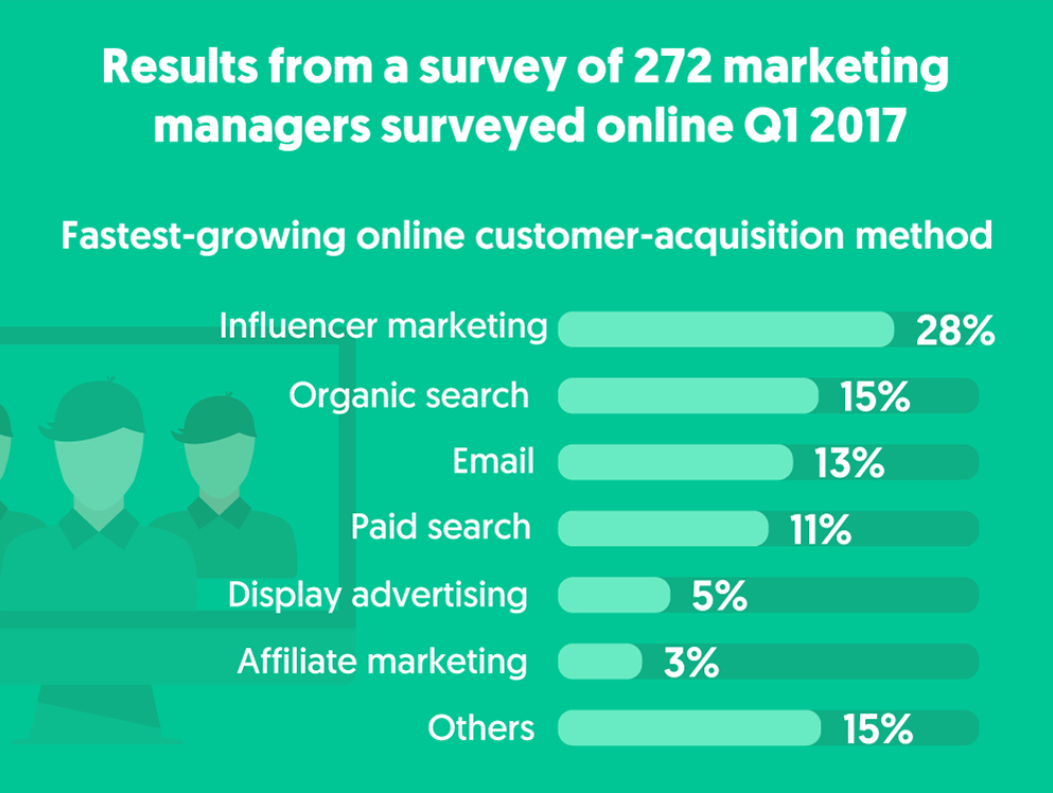MythBusters: 5 Things about influencer marketing you should stop believing

Influencer marketing has rapidly become the fastest-growing method of customer acquisition online.

(Source)
Yet many marketers don’t grasp the concept.
Simply put, influencer marketing is a hybrid of traditional and upcoming marketing techniques. The focus lies on leveraging key figures of the industry to drive a brand message to the desired audience.
While inspired by the idea of celebrity endorsement, the primary difference lies in who does the promoting; with influencer marketing, the person endorsing the brand doesn’t have to be a celebrity. This technique helps marketers humanise their brand presence online, while simultaneously allowing influencers to grow their monetary funds.
But anything that suddenly catapults into the public conscience will find itself surrounded by myths, given the limited knowledge about it.
And the same holds for influencer marketing. But its rapid growth also means it is crucial for you to understand it better. So here are five beliefs that should in no way affect your marketing-related decisions.
1. More followers = better results
A commonly held misconception is that an influencer with a large number of followers will bring better results to the table.
Getting distracted by the number of followers and collaborating with a generic content creator will not help shape the brand’s online presence as desired. Other important factors like audience demographic and influencer beliefs are key factors a marketer needs to consider before initiating collaboration.
Sperry, a boat shoe brand, leveraged over 100 Instagram-based micro-influencers to boost content for its followers. Their micro-influencers were not renowned names of the industry but identified fans of the brand on Instagram.
These people had shared high-resolution images of their products in the past and were thus employed as influencers for the brand.
2. Influencer campaign results cannot be measured
In 2017, 78% of marketers claimed that measuring ROI of influencer marketing campaigns was a major challenge for them.
However, there are a variety of techniques that can help measure campaign performance metrics. How a brand monitors progress depends on what its goal is and how far it’s travelled towards achieving it.
If generating engagement in the form of clicks, likes, and views is the goal, then Motorola’s Moto Z Family and Moto Mods serves as the perfect example to learn from.
Motorola’s agency partner Weber Shandwick created a YouTube video to drive awareness for the brand’s new launch. It worked with 13 influencers across verticals to reach a broader market.
The video generated 11.6M views, 38.1M social media shares and 122,000 clicks to the website!
3. It is used only by consumer brands
Yes, back in the day, consumer brands – namely fashion and beauty – were among the first to adopt the trend of influencer marketing. But today, B2B companies benefit equally from these influencers, who use their expert knowledge and audience influence to affect consumer opinion.
Since customers are likely to opt for products based on honest reviews, Adobe Photoshop’s Instagram account is often managed by professional photographers who take over the platform and share photos that have been edited using the software.
4. Fake followers are unavoidable
You may be put off by influencer marketing given the frequent occurrence of influencers purchasing followers. However, it is no longer as tough to spot fake followers – there are growth tools that help you study an influencer’s engagement growth and quality of followers. Other more manual ways to achieve the same are listed here.
Glossier, a Manhattan-based beauty startup, used only female fans as influencers for their promotional campaign. To circumvent the problem of fake followers, regular women with a low reach but a high level of influence among their audience were relied on for lasting growth.
Now, 90% of Glossier’s revenues come from loyal and highly engaged fans, which shows that the trick is to get the right influencers.
5. Influencer marketing will replace traditional marketing
Joel Harrison, editor-in-chief of B2B Marketing, busts this myth when he says, “Influencer marketing can and should fit into your existing marketing activities, complementing them and accentuating them.”
In an ever-shifting technological landscape, influencer marketing might provide questionable results compared to traditional models that have stood the test of time. Which is why implementing a combination of the two is advisable.
For instance, Nikon used its strategic partnership with the Warner Music Group to become the official sponsor at the SXSW Music Festival.
Nikon HD-SLR cameras were used to capture live performances; performing artists used them to click and share pictures with their fans, and significant online and offline engagement was driven for the campaign.
Influencers, accompanied by traditional marketing methods, drove 46M media impressions and over 166M social impressions!
Parting words
It is often innovation that propels a brand into the limelight. So why not make a mark while this trend is still fresh and the influencer marketing space isn’t as cluttered?
References
What is influencer marketing: An in-depth look at marketing’s Next Big Thing
